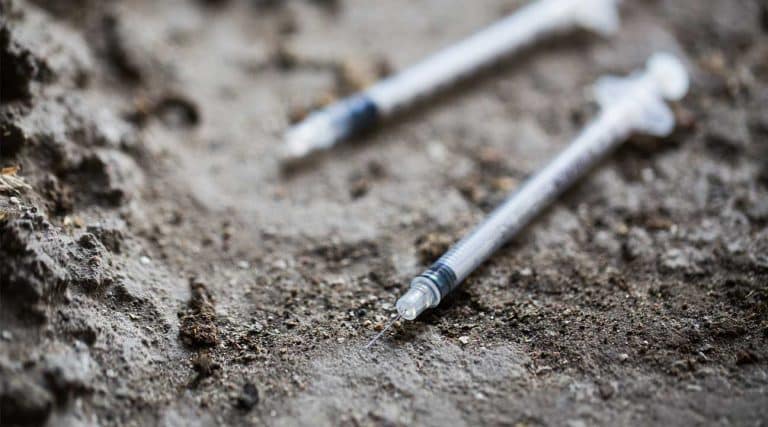Injecting Klonopin | Health Effects & Dangers Of Clonazepam Abuse

Klonopin is a benzodiazepine that is prescribed to treat seizures and panic disorders. Its main ingredient is clonazepam, and it comes as a tablet that is taken orally by mouth.
Injecting Klonopin is a form of drug abuse. It can cause many side effects in both the short-term and long-term, especially when compared to directed Klonopin use.
Reasons & Methods For Injecting Klonopin
Injecting Klonopin allows you to feel its effects faster because it does not have to be digested. The drug will quickly enter the bloodstream and bind to receptors in the central nervous system (CNS).
A person looking to inject Klonopin may crush it into a powder and mix it with water. The resulting solution is then put into a syringe and injected, which is also known as “shooting up.” Klonopin injections can be done at home with household materials, which increases its abuse potential.
Though injecting clonazepam can increase its desired effects, this comes with an increased risk of side effects.
Side Effects Of Injecting Klonopin
Klonopin is a CNS depressant that reduces brain activity. It causes feelings of sedation, but can also cause a number of other side effects, including:
- drowsiness or sleepiness
- dizziness
- urinating frequently
- respiratory depression (slowed breathing)
- blurry vision
Injecting Klonopin falls outside normal drug use guidelines, and can cause additional health effects.
Damage To Injection Site
Injecting Klonopin can damage the area where the needle was inserted, also known as the injection site. These injections are intravenous, which means that the needle is inserted directly into the vein. If the vein is missed, the surrounding skin and tissue can also be damaged.
Potential damages include:
- collapsed veins
- infection and inflammation (of skin or tissue)
- abscesses (swollen pockets of pus)
Injecting Klonopin can affect you even after you have stopped. Scarring of the injection site is one of the most common side effects, and some scars may never go away. These scars are also known as track marks.
Bloodborne Pathogens
Sharing needles with other people who inject drugs can put you at high risk of bloodborne pathogens, such as Hepatitis C, HIV, and tuberculosis. A used or “dirty” needle can also increase your risk of wound botulism, which is when bacteria gets into an open wound.
Klonopin Dependence & Withdrawal
Like other benzodiazepines (such as alprazolam, lorazepam, and diazepam), clonazepam is a Schedule IV controlled substance that can be habit-forming.
Severe or acute withdrawal symptoms are more common in patients who injected large amounts of Klonopin over a long period of time.
Potential withdrawal symptoms range from mild to severe, and include:
- vomiting
- tremors
- mood swings
- hallucinations
- panic attacks
- seizures
Withdrawal can last for months or even years after the last dose, and a treatment program may be needed to beat it in some cases.
Treatment For Klonopin Abuse
Substance abuse of Klonopin can lead to eventual withdrawal. If you are physically dependent on Klonopin, you will probably need a drug detox to come off the drug safely. Inpatient care at a treatment center can help you recover and manage your withdrawal symptoms.
Other treatments may be required, especially if you have injected Klonopin. Talk to a healthcare professional or contact us today to learn more about potential treatment options.
Written by Ark Behavioral Health Editorial Team
©2024 Ark National Holdings, LLC. | All Rights Reserved.
This page does not provide medical advice.
Centers for Disease Control and Prevention - Injection Drug Use and Wound Botulism | Botulism | CDC
National Institutes of Health - Effect of intravenous injection of biperiden and clonazepam in dystonia
National Institutes of Health - Hypertrophic and atrophic scars
National Institutes of Health - Clonazepam | C15H10CIN3O3 - PubChem
U.S. Drug Enforcement Administration - Controlled Substance Schedules
U.S. Food and Drug Administration - clonazepam - FDA
U.S. National Library of Medicine - Clonazepam: MedlinePlus Drug Information


Questions About Treatment?
Ark Behavioral Health offers 100% confidential substance abuse assessment and treatment placement tailored to your individual needs. Achieve long-term recovery.
100% confidential. We respect your privacy.
Prefer Texting?
Our friendly support team is here to chat 24/7. Opt out any time.







 Learn More
Learn More








